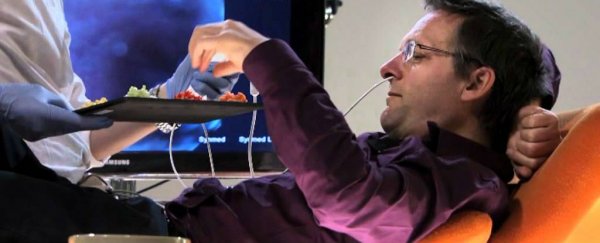
For a lot of us, the holiday period means lots and lots of eating. After all, why not treat yourself to another slice of mum's delicious raisin pudding? As beautiful and appetising as food is on the plate, as soon as it passes your mouth, the scene becomes rather disturbing. Normally, we don't look down our throats to see the digestion process, but in 2012, BBC's science journalist Michael Mosley did just that - and the results were as gross as you can probably imagine.
In a BBC Four documentary, Guts: The Strange and Mysterious World of the Human Stomach, Mosley spent the day as a brave exhibit at the Science Museum in London. He swallowed a tiny pill housing a camera and some lights, which beamed images straight from his esophagus and gut onto screens at the museum.
Any onlooker could watch the gruesome footage of food chunks being chewed and turned into mush, travelling down the esophagus, and then into the slimy cavern of the stomach.
Here pools of gastric juice, composed of hydrochloric acid and pepsin, do the work of liquefying food into a partially digested mass called 'chyme', which then gets mixed with digestive enzymes and travels on into the roughly 6 metres of small intestine, where about 90 percent of nutrients are absorbed.
In the somewhat stomach-churning excerpt above, Mosley also got a tube with a camera passed through his nose, to get an even better look at the stomach cavity. Watch to get a glimpse of what just happened to that giant Christmas lunch you inhaled. It's probably the horror video that gingerbread parents show their misbehaving gingerbread kids.
